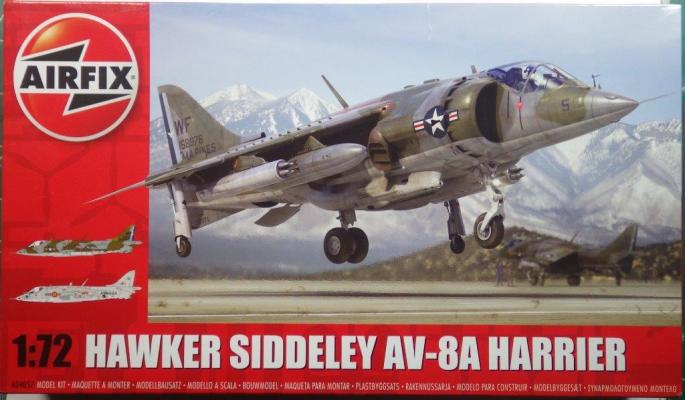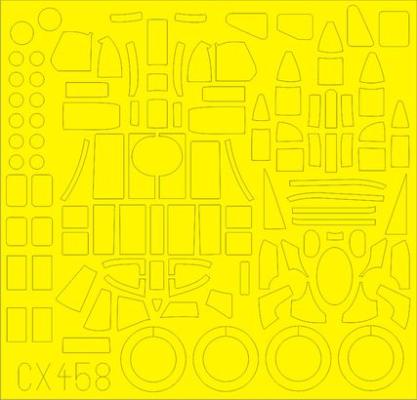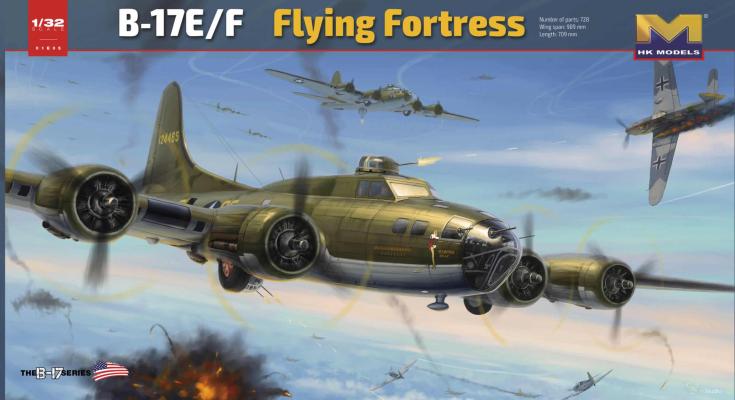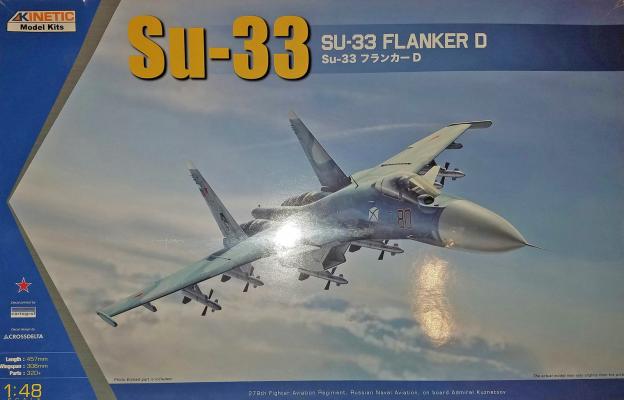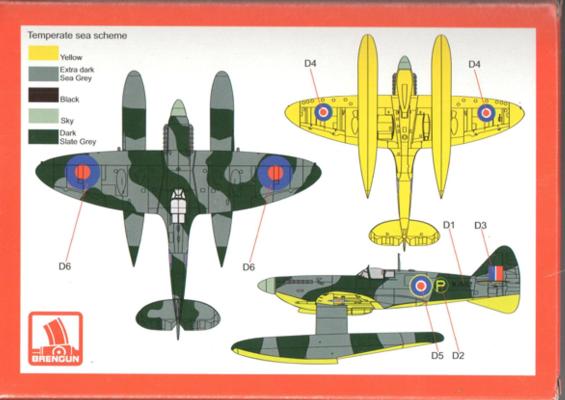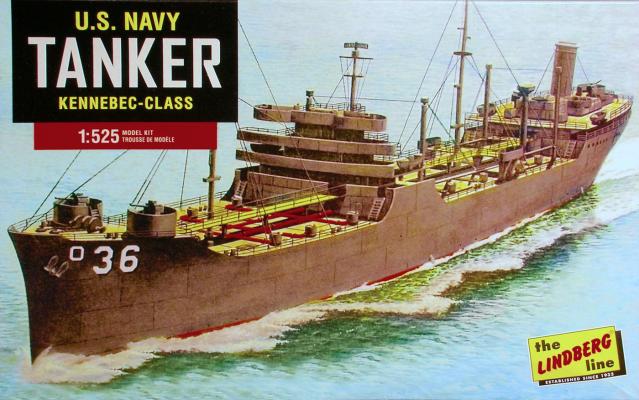Following its successful introduction into service with the Royal Airforce, the Harrier generated considerable interest for export orders to other countries. The largest demand for the vertical take-off and landing aircraft came from the United States Marine Corps, who saw the excellent potential to provide close air support while operating from the decks of the smaller amphibious landing ships supporting the Marines. Starting in the early 1970s, the Harrier entered service with the USMC. The AV-8A Harrier was used by the Marines until 1979, when it was replaced by the AV-8C, and today the USMC flies the AV-8B Harrier II.
Reviews
Thanks to Eduard for providing more of their excellent aftermarket parts for IPMS USA to review, and to IPMS leadership for sending it to me!
This set is simple to use; Kabuki tape masks for all the clear bits! Included are masks for all the windows, canopy parts, and gun turrets, and wheels. One benefit of these sets is the ability to mask off VERY tiny windows; in this case, all the 1/8” round porthole windows, and some of the intersecting canopy window bits. These can be less than 1/16” across, and are VERY difficult to mask; same with the turret frames, because of the complex curves. Eduard utilizes multiple small tape masks to make sure you cover all the areas without wrinkling, which leads to paint creep under the tape.
Beginning with the rest of the fuselage assembly (from Part I of my review), the fit of the two fuselage halves was good, but my alignment of the bomb bay catwalk and structure must have been a little off, since it’s slightly closer to one side. I installed most of the glass except for the radio hatch and nose; the waist and nose glass had to be sanded to fit. I used Micro Mask to mask the windows since I couldn’t find an aftermarket mask set for the E model. Some spots must have not been covered, because it was a lot of work to clean off overspray.
We thank Mushroom Model Publications for providing this book for review.
The De Havilland Mosquito was arguably the most versatile and successful twin-engine aircraft of World War II. It was originally designed as an unarmed bomber and reconnaissance aircraft. However, it excelled in other rolls that included day and night fighter, fighter-bomber, pathfinder, and high-speed military transport. It was constructed mainly of balsawood sandwiched between sheets of birch and covered with a fine woven cotton fabric and painted with a coat of silver dope. Its two Rolls-Royce Merlin engines gave it a maximum speed in the 380 mph range. Its beauty and war record has made it one of the most popular RAF aircraft of World War II.
The Su-33 Flanker-D is the carrier based twin-engine air superiority fighter derived from the Su-27. It was first used back in 1995 and officially entered service in 1998. However with the break up of the Soviet Union only 24 of this aircraft were produced. In comparison to the Su-27, the Su-33 has a strengthened undercarriage and structure, folding wings and stabilizers, better engines and of course the wings are larger to increase lift.
Background
Of the many consumable items available to the modern-day modeler, pre-cut masking aids are perhaps one of the most useful types on the market. Originally targeting aircraft areas of interest, recent years have seen a tremendous proliferation into other genre – including military vehicles.
The Product
A recent and pleasant surprise was to see Hauler offer a masking set for Tamiya’s 1/48 scale US Staff Car kit. Having that model on the near-term build list, I just had to jump at the chance to try some Hauler masks for the first time. The set contains two sheets of finely cut, super-thin vinyl masks for glass areas and wheel hubs, and stencils for national insignia stars. A single sheet of placement diagrams is more than sufficient for applying the masks.
Thanks to Eduard for providing more of their excellent aftermarket parts for IPMS USA to review, and to IPMS leadership for sending it to me!
This set seriously improves the appearance and detail of Revell’s 1/72 halifax B III; consisting of all the requisite improvements for the landing gear bays, and a few sundry other bits and pieces like the aft fuselage between the tail turret and mainframe, plus details for the landing gear frames.
This set is simple to use and improves the kit exterior. Main gear bays are improved with front and aft bulhead details, stringers, and detailed sidewalls. The gear doors have interior lamentaitons added for detail, as well as positive-attachment hinges. I used thick superglue to attach everything on this set.
Using a curved #11 blade, I removed the necessary internal plastic details to be replaced as preparatory work.
I am very appreciative of Acrylicos Vallejo (AV) for sending new products for review, and I am equally appreciative of all the Review Corps crew members who take care of all of the legwork to get materials to reviewers and the completed reviews published for the modeling community. It is a privilege to be part of this manufacturer-modeler group effort.
Thank you to the great folks at Hauler-Brengun for bringing a welcome and unique variant of the iconic Spitfire to the scale model world. Thank you also to the IPMS Reviewer Corps staff members who do the hard work in getting us kits to review.
The Kit
Round 2 Model Company purchased the rights to the entire Lindberg line and they have been releasing selected kits gradually. In the past, “real modelers” disparaged the Lindberg Line as being inaccurate and simplistic, but these kits were never designed to be the be all and end all of accuracy, even at the time long ago when they were released. They were designed to generally represent the subject and do so in a kit that was easy to assemble and reasonably priced. By today’s standards, they are not what most ship modelers are looking for, however if you’ve got a youngster you’re trying to get involved in the hobby or maybe a Brownie or Cub Scout group, they would make great projects and teaching tools. Or, maybe you want to try out some new techniques. These kits would make great test beds for that.

